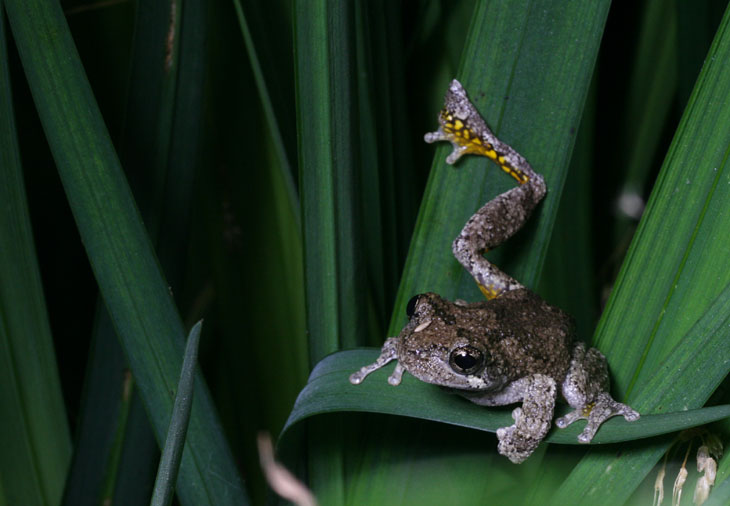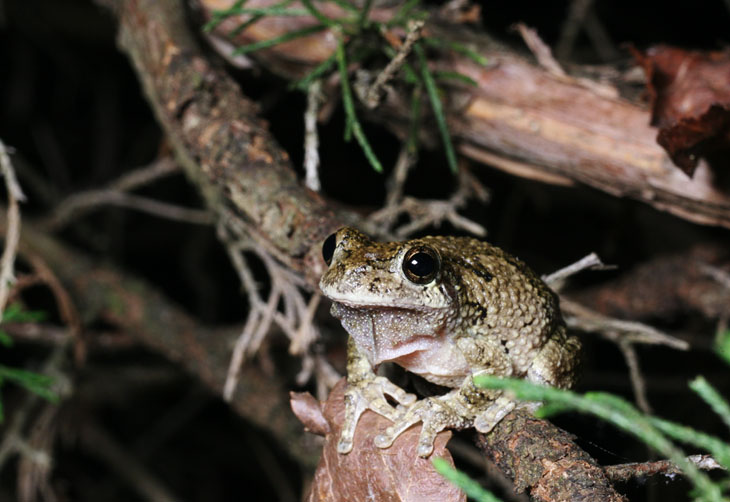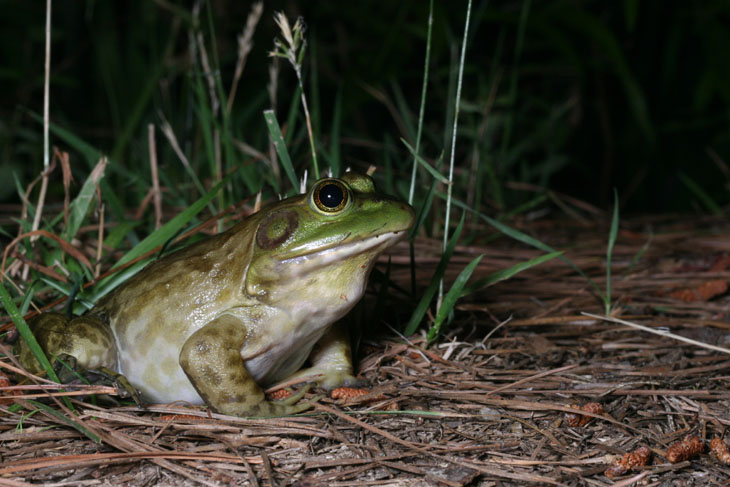
This next week is promising to be a little thin on posts, though I’m going to try and finish a few currently in drafts. But here’s a quickie.
So, on stepping outside Tuesday night, I heard the treefrogs calling not far away, and I decided I needed to try and record their calls. I grabbed my little digital voice recorder and the camera and began following the sounds, confirming my suspicions that they were in the ditch alongside the nearby main road – or at least one was, others being across the street. The recorder certainly isn’t even close to professional equipment, but it served its purpose here. You see, there are two species of grey treefrog in this area, and they’re pretty much identical; the only good way for a non-biologist to tell them apart is by their call. There is the common grey treefrog, Hyla versicolor, and then there’s the Cope’s grey treefrog, Hyla chrysoscelis – the latter has a higher-pitched call. I’ve heard the calls and suspected we had the Cope’s in this area, but it required recording the call for comparison, and I was finally successful at this. My amplified recording is below, which you can compare against this YouTube video.
The photo at top is from the ditch, and that one knew I was mucking about and wasn’t going to do any calling for me – it had already hopped to a slightly less exposed position, thus the curious pose. The recording was made after I crossed the street, so it’s possible the guy above is the one you hear in the background. One of the foreground ones is seen below, since I pinned down its position by the call. Helpfully, this one was just below eye level in a cedar tree.

By the way, I should say that both of these were typical size for the species, which is to say, 4-5cm in body length – fairly small as frogs go, and slightly smaller than the green treefrogs I showed off last year. But since I was now getting close to the nearby pond, I kept going, seeking the massive bullfrogs that I’d seen there a few times. By day, they’re extremely spooky and won’t allow close approaches, but at night, revealed by a flashlight, they’re less aware of the danger. Thus, I could get nice and close.

American bullfrogs (Lithobates catesbeianus) can get pretty big, quite a few times the mass of the treefrogs. This one is about 10-12cm in body length, about the size of your fist – unless you have a small fist, in which case you should use mine as a guide. You won’t see any of these climbing reeds, that’s for sure.
And while I was there, I snagged one of their calls too, but this one was more distant and had to be amplified significantly, enough to register the sounds of the interstate in the background.
After doing images of a few individuals, some of which realizing I was close and subsequently launching themselves back into the water, I headed back, spotting a green frog along the way, the same species that had been removed from our pond just a few days ago by the opportunistic red-shouldered hawk. This one wasn’t calling, and as yet I’m not sure I could identify the call if I heard it, but here’s a pic anyway.

If you want to distinguish green frogs (Lithobates clamitans) from bullfrogs, look for the dorsolateral ridge, that veinlike wrinkle extending from the eye along each edge of the back – the bullfrog doesn’t have them. Plus, if it looks big enough to eat a chihuahua (we can always hope,) it’s a bullfrog.
Anyway, that wasn’t too bad for less than an hour’s casual shooting. And I did some wolf spiders too, which makes me recall that we haven’t had an arthropod post for a bit, and you must be wondering what’s wrong with me. Be patient – I’ll get something creepy up eventually.




















































